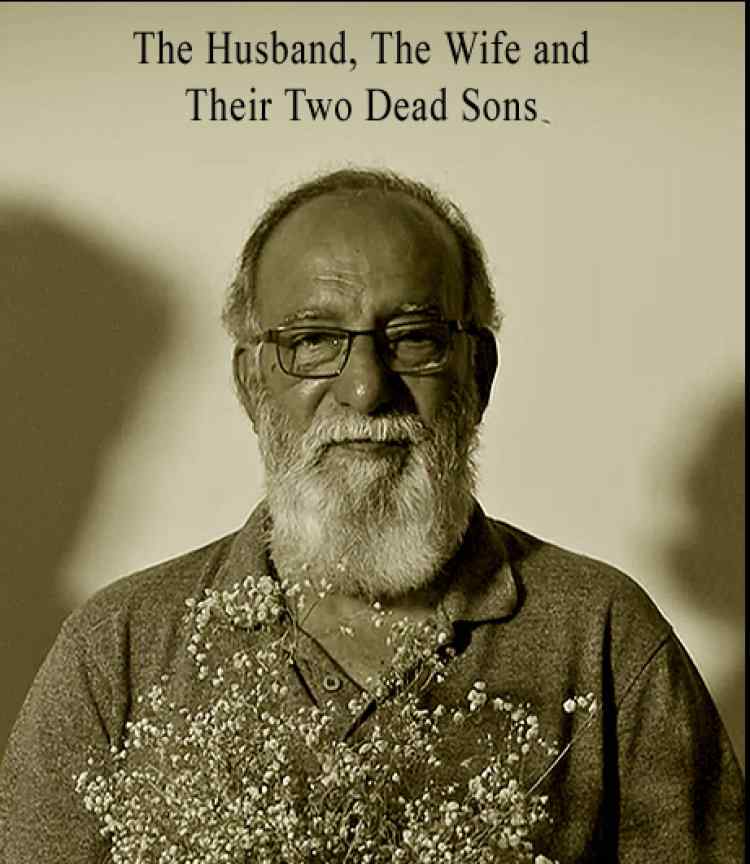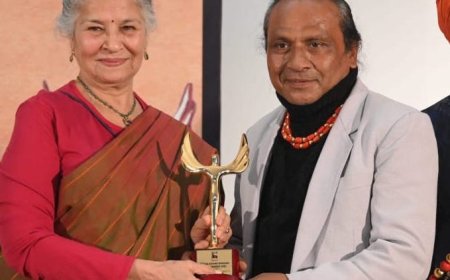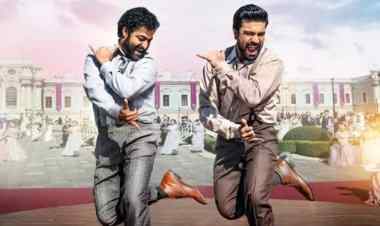THE HUSBAND THE WIFE AND TWO DEAD SONS A FEATURE FILM BY SATISH AND SANTOSH BABUSENAN

Satish and Santosh Babusenan, brothers, are filmmakers who make very off-beat films in Malayalam. They have made several feature films under their own banner, Fifth Element and many of them have been screened at film festivals across the country. It was set up in 2010 when five old friends with a passion for cinema got together. They are Doney Joseph, Santosh Babusenan, Satish Babusenan, Sreekumar K. and Tommy John.
Fifth Element productions have won recognition and travelled to festivals all over the world. Awards include Silver Gateway at Jio MAMI, Best Indian film at Patna, John Abraham Award, Best Actor at New York Indian Film Festival, Film Critics Award for Direction, several Government of Kerala Awards, etc. All the films are written and directed by Santosh and Satish Babusenan aka Babusenan Brothers. There is an old folk belief that whoever possesses the secret of the Fifth Element has the power to turn every ordinary story into magic on celluloid.
Their most recent film is intriguingly named The Husband, The Wife and Two Dead Sons which has been doing the festival rounds over the past year. Talking about their aim in making movies, they say, “Although film as an art has changed drastically over the years, its fundamental concerns have remained unchanged. War, poverty, internal and external conflicts, love, disease and death. In our films we try to grapple with some of the existential and ethical issues we think are central to human life. We like to focus on thoughts, attitudes, ideologies, etc because we believe that the world around us really is a reflection of our inner lives. It is one’s ability to understand the murky happenings inside that can make life easier outside.”
This particular film has a strange story, just like the Babusenan Brothers’ other films. It is about an elderly couple who live a quiet life in a house on a hill. Their two sons died years ago but the husband can still see and talk to them. One day the dead sons inform him that their mother will have to join them soon. The film is a compassionate exploration of death and loneliness and trying to make sense of it all.
The directors’ say, “In India it is common for large families to live together. We brothers too grew up in such a large family full of grandparents, uncles, aunts and cousins. As the children grew older and started their own families, the joint family life continued with more houses being built nearby and new additions in terms of spouses and kids and grandkids and new occasions to make merry and revel in.”

Image: Film Poster
They go on to add, “This film, our eighth feature, is perhaps the most personal of them all. We have tried to share our ideas about dying and death in this film. It was a cathartic process for us. We hope it will make our viewers ponder over the great mystery which we will all have to confront on the final day. We hope this will help us deal with the uncertainties of life and thus come to terms, in whatever small ways, with the certainly of death. This film is a small offering towards this cause.”
This writer, having watched the film very closely, has questions that arise here such as - can I interpret the father's being able to communicate with his dead sons a way of coping with grief? Or, to underscore his belief that Death is an illusion and there is basically no difference between the living and the dead? Or, is it the result of his near-death experience when he was eight years old? And these are also the reasons why his wife Suju can neither see her sons nor communicate with them?
My interpretation is like this: The idea that death is an illusion and that nobody really dies has been part of human belief in almost all parts of the world, particularly in India. Naru. The father clings to this philosophy rather adamantly, as shown in his dialogue with the dead philosopher (the man is dead and that is why he is represented as standing on the other side of a fence). His wife Sujata (Suju) does not know what to make of this. Part of her is sceptical, but she certainly believes that It is good to be able to see her dead sons even if it’s only imagination. She envies her husband about his ability to communicate with their two dead sons while she cannot.
The directors say, “We wanted to keep this one slow, unhurried, as if there was no place we were going (isn’t life itself a bit like that?). We wanted to portray the deeper levels of the characters’ psyches and decided that this could be best achieved by having them share their secret thoughts with each other. To this end, we used monologues in conversations. We also decided to keep images and metaphors free of their usual connotations. We feel that the unchained metaphor, as we would like to call it, is a powerful tool. And finally, we decided to keep the narrative open ended because that is reflexive of our own attitude to the question of knowledge. We believe that all knowledge is, at best, probabilistic.”
The entire film, shot almost entirely on location beyond Trivandrum city, follows a very slow pace with very few shots of the city proper. The directors add to their working as the film was entirely shot during the pandemic. “Sometimes we had to lug the gear all the way up. The hilltop where we shot those remote scenes is now covered with villas. We were lucky to discover that hilltop. Not many people had heard of it but it was told us by a friend. We were really glad we found it, because what had been such beautiful land for years is now, in a matter of mere months, covered in concrete structures.”
Interestingly, the script remains completely silent about the actual death of the two sons, when they died, how they died, what impact it had on the parents is touched upon and explored which becomes the main narrative of the film. Why? “It was a conscious decision. We wanted to stick to the exegesis and avoid back story as much as possible. In real life, we rarely come across any back story, except, for instance when someone introduces us to anotherIt is a trick that we feel has been done to death and makes for poor narration, something like the flashback. The characters in this film do narrate some past events but those are there merely to give a peek into their characters. The boys probably died in some road accident but we felt the actual cause of death was irrelevant, especially because the story was about someone who claimed death is an illusion. Avoiding the back story has helped to keep the illusion of reality in the film, We would like to think” is their response.
Is the film inspired from a true story? To this, the Sadasivan Brothers say, “We knew a family that had lost both their sons. The parents were of course devastated by the loss. But they did not see the boys or anything. All that is made up. We were just using that background as a peg on which to hang our ruminations. It is somewhat like when people say that this body is merely a garment to clothe our idea of who we are.”
The sound design in the film is extremely detailed and subtly nuanced - the sound of crickets almost always, the sound of chirping birds in flight, the sound of the waves of the sea near where they live, the sound of the shehnai on the small transistor the ambient sounds around their lives. Why? “We used live sound on the film. The crickets you hear all night, the chirping birds in flight etc, are all real. The house where we shot is located on top of a hill and it is all so silent there. Incidentally, we realised, from actually listening to cricket sounds in the night that the droning is not incessant, as one would imagine. The crickets, for whatever reason, suddenly go all still and then, unexpectedly, they start all over again. Funny, it is, how we actually miss these things. Our sound designer actually made sure that we caught the realism of these sounds.”
About the casting, the brothers say, “There are only five or six characters. Almost all of them were played by actors we had picked over the years. They are actors we’re comfortable with and they are comfortable with us too. Kaladharan who plays the husband has been there in all the eight films we’ve made so far. The son Rajeev was played by Sreeram who has been with us in several films. Ranjith, the other son, is played by Chinmay who we discovered while scouting for our previous film Dating and Death. We were working with Thara Kalyan who plays Suju for the first time. But we did so much rehearsal that all of us became very comfortable with each other. We think this is absolutely important as it helps the actors ease into their roles. We really do not want the actors to be thinking about their lines at the time of shoot. We wanted them to be so comfortable with the lines that at the final shoot they could focus on finer nuances like tone, expression and emotion and not strain themselves to get the lines right. It was basically a lot of team work that involved the entire crew. We loved it and hope the others enjoy it too.”
The closure is ambiguous - all four of the family are seated together outside in the fields and having fun while the soundtrack is absolutely silent. The mother is dead, we know. But is the father also dead? He is the only man who functions as a bridge between Life and Death.
To this, the brothers say, “The mother is dead. The father isn’t. He continues to interact with the wife and the kids. It would be good to wonder if the whole thing is imagined by the father. Or, is this last scene the imagination of the mother? We cannot really be sure. In fact, the last spoken sentence of the film is ‘Stop the car. I am unable to breathe.’ What does that mean? Apparently the car is being driven by one of the sons, but how can that be? As the makers of this film, we want to step outside the realm of certainties here. Human history is suffocating with conflicting ideologies based on certainties about essentially unknowable things. Perhaps those of us who want to figure out things for ourselves need to stop the car. Once and for all. But then, who knows?”
And on that note, we part.
***
About the author: Dr. Shoma A.Chatterji is an Indian film scholar and author based in Kolkata.
What's Your Reaction?



































































